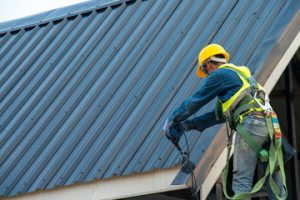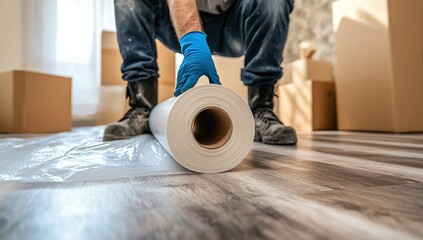Maintaining a clean home requires time and effort. Fortunately, you can free up your time to focus on your family and hobbies by hiring a professional Cleaner Near Me.
There are many benefits to hiring residential cleaning services, including: they help you save time, and they’re more thorough than traditional cleaning methods.

They Save You Time
Cleaning isn’t everyone’s favorite activity, and it can become a stressful task when you’re juggling multiple responsibilities. Hiring professional cleaners helps ease this stress by taking the chore out of your hands. Plus, the time you save by outsourcing this responsibility gives you more opportunity to spend on leisure activities or on important family or work projects.
Professional cleaners are trained to clean efficiently, using high-quality cleaning products that are safe for different materials and surfaces. They’re also familiar with the best techniques to tackle specific challenges, such as removing stubborn stains, sanitizing high-touch areas, and organizing cluttered spaces. In addition, professional cleaners bring their own industry-grade supplies, reducing the need for you to constantly purchase new products.
Besides saving you time, hiring a professional cleaner can also improve your health and the condition of your home. Dirty environments can cause a variety of health problems, including allergies, respiratory issues, and infections. Professional cleaning services remove harmful bacteria, allergens, and dust mites from all corners of your space, improving indoor air quality and reducing the risk of health problems.
A clean and tidy space is not only aesthetically pleasing, but it can also increase productivity and morale for employees or customers in a retail setting, as well as provide peace of mind for residents in a residential building. In addition, regular cleaning by professionals can reduce the need for costly repairs and renovations, as dirt buildup can damage a variety of items in your home. Professional cleaners can also help ensure that your property retains its value, as well as prevent future damage from unremoved spills and marks. This is especially important for properties with a lot of foot traffic and visitors.
They Are More Thorough
Professional cleaning services are committed to rigorous standards and have access to tools that enable them to remove dirt and stains in places where you might not think to look. This makes them able to tackle areas of your home that are difficult to clean on your own, such as behind and on top of furniture, or in hard-to-reach spaces like baseboards.
The use of specialized equipment and products also helps make your home or office healthier, as they can help reduce the buildup of harmful contaminants. These include airborne allergens, bacteria, and other toxins, which can lead to health problems if they aren’t removed regularly.
Hiring a professional cleaner is also a smart way to keep your business or workplace clean and safe for your employees. Employees will be more comfortable working in a clean space and will be less likely to take sick days when germs are spread. This can save your company a lot of money over the long term.
It’s also a good idea to communicate with your cleaning service so they know what you want them to do. For example, if you want them to focus on specific rooms or surfaces, let them know so they can adjust their schedule accordingly. This can also help ensure your home or office is always looking its best by allowing you to focus on things that are more important. The right professional cleaning services can be a great addition to your life, giving you back time and helping you feel more relaxed and organized. Plus, they can help you maintain a healthy home or workplace that will boost your productivity and morale.
They Are More Affordable
The initial cost of hiring professional cleaners may seem like a steep investment, but their service fees often come with added benefits. For instance, cleaning companies buy their supplies in bulk, drastically reducing the unit cost of commercial-grade products. They also use advanced equipment that minimizes the amount of product needed to get great results, further lowering cleaning costs.
Additionally, they can address difficult areas that are difficult for you to clean on your own, such as under and behind large furniture pieces. This can help eliminate set-in stains and marks, which often require special care and products to break down. They can also remove harmful mold and allergens that can lead to serious health issues if not addressed in a timely manner.
You should always be aware that you are giving up a level of privacy when hiring a professional cleaning company. This is because you are allowing a team of strangers to enter your home or business, which can be uncomfortable for some people. However, reputable cleaning companies will always treat your space with respect and discretion. They take your safety and the security of their employees very seriously, which is why they go out of their way to verify all credentials.
It’s important to understand that cleaning services can provide significant savings in the long run. The initial cost of DIY cleaning might appear cheaper, but the costs associated with equipment maintenance and supply replenishment might tilt the scales. Additionally, professional cleaning services can offer flexible options that allow you to save money by scheduling regular or seasonal cleanings. This can keep your property in good condition and maintain its value.
They Are More Flexible
Professional cleaning services offer a wide range of services that can be tailored to suit your needs. Whether you need a one-off deep clean or regular maintenance cleaning, they will work with your schedule to ensure the space is always looking its best. They can also accommodate specialized services such as carpet cleaning, window washing, or deep stain removal.
When you hire a professional cleaner, they will bring all the tools needed to get the job done right. This means that you won’t have to worry about buying expensive cleaning products or finding a place to store them. Additionally, they will know how much product is needed for different surfaces and areas of your home or office, and won’t leave until they are satisfied that the job is done.
The team of professionals at a cleaning company can also tackle hard-to-reach areas like behind and under furniture, and in tight spaces. This attention to detail helps to improve the health of your living or working space by reducing dust mites, bacteria, and harmful particles. This will help to reduce allergy symptoms and asthmatic flare-ups, while promoting a healthy environment for everyone.
Trying to clean your own home or business can be dangerous if you’re not sure what you’re doing. You could expose yourself to harsh chemicals, hurt yourself by falling, or even risk a fire if you’re not careful. However, professional cleaners are trained to handle these tasks safely and efficiently. They will also have access to insurance that covers any damages or injuries that may occur while working on your property.
They are safer
A professional cleaning service will have all the right equipment and supplies to get the job done. This means that you won’t have to worry about exposing yourself to harsh chemicals or trying to reach difficult-to-reach spaces. Plus, they’ll know the best products to use for different surfaces and materials.
They also have the experience and knowledge to avoid problems like mold growth and other hazards that could harm your health or the environment. They’ll be able to reduce allergens and bacteria in the air, which can improve employee morale and productivity at work or create a welcoming atmosphere for customers and guests in residential settings.
Keeping your home clean is important for many reasons, but it can be difficult to find the time or energy to do so. Hiring a professional cleaner can make the process easier and more efficient, which can help you feel calmer and turn your space into a truly relaxing retreat. Whether you’re looking for a local cleaning service or need to find one in another city, be sure to consider these advantages before making a decision.








